Junior Reserve Officers' Training Corps
The Junior Reserve Officers' Training Corps (JROTC) is a federal program sponsored by the United States Armed Forces in high schools and also in some middle schools across the United States and United States military bases across the world. The program was originally created as part of the National Defense Act of 1916 and later expanded under the 1964 ROTC Vitalization Act.
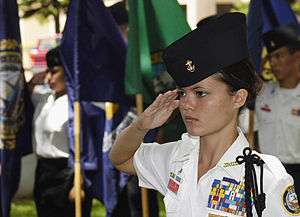
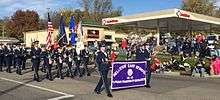

Role and purpose
According to Title 10, Section 2031[1] of the United States Code, the purpose of the Junior Reserve Officers' Training Corps is "to instill in students in [the United States] secondary educational institutions the values of citizenship, service to the United States, and personal responsibility and a sense of accomplishment."[2] Additional objectives are established by the service departments of the Department of Defense. Under 542.4[3] of Title 32 (National Defense) of the Code of Federal Regulations, the Department of the Army has declared those objectives for each cadet to be:
- Developing citizenship and patriotism
- Developing self-reliance and responsiveness to all authority
- Improving the ability to communicate well both orally and in writing
- Developing an appreciation of the importance of physical fitness
- Increasing a respect for the role of the U.S. Armed Forces in support of national objectives
- Developing a knowledge of team building skills and basic military skills
- Taking 1–3 years of the course grants cadets the ability to rank higher if they pursue a military career.
Section 524.5[4] of the CFR National Defense title states in part that JROTC should "provide meaningful leadership instruction of benefit to the student and of value to the Armed Forces. ...Students will acquire: (1) An understanding of the fundamental concept of leadership, military art and science, (2) An introduction to related professional knowledge, and (3) An appreciation of requirements for national security. The dual roles of citizen/soldier and soldier/citizen are studied. ... These programs will enable cadets to better serve their country as leaders, as citizens, and in military service should they enter it. ... The JROTC and NDCC are not, of themselves, officer-producing programs but should create favorable attitudes and impressions toward the Services and toward careers in the Armed Forces."
The military has stated that JROTC will inform young Americans about the opportunities available in the military and "may help motivate young Americans toward military service."[5] A 1999 Army policy memorandum stated that "While not designed to be a specific recruiting tool, there is nothing in existing law that precludes ... facilitating the recruitment of young men and women into the U.S. Army," directing instructors to "actively assist cadets who want to enlist in the military [and] emphasize service in the U.S. Army; facilitate recruiter access to cadets in JROTC program and to the entire student body ... [and] work closely with high school guidance counselors to sell the Army story."[6] In a February 2000 testimony before the House Armed Services Committee, the armed service chiefs of staff testified that 30%–50% of graduating JROTC cadets go on to join the military:
- General James L. Jones, then Commandant of the Marine Corps, testified that the value of the Marine JROTC program "is beyond contest. Fully one-third of our young men and women who join a Junior ROTC program wind up wearing the uniform of a Marine."
- General Eric K. Shinseki, then Chief of Staff of the United States Army, testified that "Our indications are about 30 percent of those youngsters—we don't recruit them, as you know. We are not permitted to do that. But by virtue of the things that they like about that experience, about 30 percent of them end up joining the Army, either enlisting or going on to ROTC and then joining the officer population."
- General Michael E. Ryan, then Chief of Staff of the United States Air Force, testified that "almost 50 percent of the folks that go [...] out of the Air Force Junior ROTC go into one of the Services by enlisting or going to ROTC or going to one of the academies."
- Admiral Jay L. Johnson, then Chief of Naval Operations, testified that "Even if the number is only 30 percent, that is a good number. But think about what we get out of the other 70 percent. They have exposure to us. They have exposure to the military. And the challenge of the education mandate that we all share in principals and school counselors and school districts that won't let us in, that is a powerful tool I think to educate whether or not they end up in the service. So it is a long way around saying it is well worth the investment for lots of different reasons."[7]
General Colin Powell said in his 1995 autobiography that "the armed forces might get a youngster more inclined to enlist as a result of Junior ROTC," but added that "Inner-city kids, many from broken homes, found stability and role models in Junior ROTC."[8] U.S. Congress found in the Recruiting, Retention, and Reservist Promotion Act of 2000 that JROTC and similar programs "provide significant benefits for the Armed Forces, including significant public relations benefits."[9] Former United States Secretary of Defense William Cohen referred to JROTC as "one of the best recruitment programs we could have."[10][11]
Organization


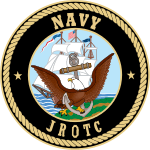
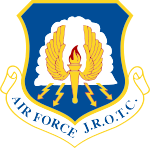

Five of the seven branches of the Uniformed services of the United States maintain a Junior Reserve Officers' Training Corps, organized into units. As of June 2006, there are a total of 3,275 units:
- 1,600 Army AJROTC units[12]
- 794 Air Force AFJROTC units[13]
- 619 Navy NJROTC units[14]
- 260 Marine Corps MCJROTC units[15]
- 2 Coast Guard CGJROTC units[16]
Prior to 1967 the number of units was limited to 1,200. The cap was increased to 1,600 units in 1967 and again to 3,500 units in 1992; the statutory limitation on the number of units was struck from the law in 2001.[17][18] Their goal is to reach 3,500 units by Feb. 2011 by encouraging program expansion into educationally and economically deprived areas.[19]
Units are set up according to the layout of their parent service, often referred to as the "Chain of Command."[20][21] Army JROTC units follow a company (usually the period the class is held in), battalion (all periods), and at larger events brigade (multiple battalions) structure. Marine Corps JROTC units follow the battalion, or in cases of larger size, brigade structure. Air Force JROTC units are composed structurally based on size (wing if more than 251 cadets, group if more than 101, squadron if more than 51, Flight if 26, element is more than 2 less no more than 8, detail is 2, individual is 1). Navy JROTC typically follows the company (100-149 cadets), battalion (150-299 cadets), or regiment (300+ cadets) structure depending on the size of the unit.
| DoD Budget[22] | FY 2007 | FY 2008 | FY 2009 |
|---|---|---|---|
| AJROTC | 128,281 | 146,147 | 149,329 |
| NJROTC | 45,411 | 47,844 | 50,494 |
| MCJROTC | 17,423 | 16,996 | 17,740 |
| AFJROTC | 77,901 | 94,760 | 108,730 |
| Total U.S. $1,000 | 269,016 | 305,747 | 326,293 |
JROTC is partly funded by the United States Department of Defense with an allocation in the military budget of about 340 million dollars for the fiscal year 2007, of which about 68 million are personnel costs.[23] The federal government subsidizes instructor salaries, cadet uniforms, equipment and textbooks. The instructors, usually retired military personnel, continue to receive retirement pay from the Federal government, but in addition, the schools pay the difference from what the instructors would receive if they were on active duty. The service concerned then reimburses the school for approximately one-half of the amount paid by the school to the instructor.
Although active duty officers may be assigned, most instructors are retired from the sponsoring branch of the Armed Forces. In the Army JROTC program, the cadet unit at each school is directed by at least one retired commissioned officer, a Senior Army Instructor (SAI), (in the grade of Captain through Colonel) or a Warrant Officer (WO1 through CW5) and at least one retired Non-Commissioned Officer, an Army Instructor (AI), (in the grade of Staff Sergeant through Command Sergeant Major). In certain situations there may be additional instructors.
A new provision from the John Warner National Defense Authorization Act for Fiscal Year 2007 (Section 540) was signed into law in October 2006, permitting retired Reserve Component officers and noncommissioned officers to be hired as instructors.
There are no national requirements that JROTC instructors have the teaching credential required by other teachers in public high school, although there are a handful of counties that do require a teaching credential.[24] In at least one jurisdiction (California), the government requires JROTC instructors to have at least four years of military experience and possess a high school diploma or equivalent.[25] AJROTC instructors need to be within one year of retirement or retired from active military service for five or fewer years. MCJROTC instructors need to have graduated from high school, have at least 20 years of active military service and be physically qualified according to Marine Corps standards.[26]
AFJROTC previously required a minimum of 20 years of active duty but has since been overridden by a provision in the John Warner National Defense Authorization Act for Fiscal Year 2007 (Section 540), signed into law in October 2006, permitting retired Reserve Component (e.g., Air Force Reserve and Air National Guard officers and noncommissioned officers to be hired as instructors. Officer instructors need to have a minimum of a bachelor's degree, while a high school diploma or equivalent is sufficient for enlisted instructors.
For AJROTC the Non-commissioned Officer has to attain an associate degree (AA), with teaching credential, in order to be assigned an AI. To be assigned as a SAI the AJROTC Instructor has to hold a BA degree, with teaching credentials.[27]
NJROTC also required a minimum of 20 years of active duty until it was overridden by a provision in the John Warner National Defense Authorization Act for Fiscal Year 2007 (Section 540), signed into law in October 2006, permitting retired Reserve Component (e.g., U.S. Navy Reserve officers, chief petty officers and petty officers to be hired as instructors. The minimum education requirement for an enlisted naval science instructor is a high school diploma or equivalent, with a baccalaureate degree from an accredited college or university required for a commissioned officer senior naval science instructor.[28] The Navy requires that JROTC instructors be employees of the school and that they are accorded the same status as other school faculty members.[29]
National Defense Cadet Corps[30] (NDCC) offers similar programs as JROTC. NDCC units differ from JROTC in that they receive little or no financial support from the Armed Forces; uniforms, equipment, other materials and instructor salaries must normally be furnished by the school hosting an NDCC program.[31] Except for the funding aspects, JROTC and NDCC programs are virtually identical, although the cadet corps is not limited by the federal statute that restricts JROTC to offering courses only for students in ninth through 12th grades.[32] Per 2005, Chicago had 26 Middle School Cadet Corps enlisting more than 850 students.[33]
Instruction and activities
The Code of Federal Regulations states that JROTC is "designed for physically fit citizens attending participating schools."[34] In public schools, JROTC is usually an elective course with membership limited to US citizens and legal foreign nationals, those who will graduate with their 9th-grade cohort, and have not experienced an out of school suspension during the preceding six-month period. Often, students who participate for one year receive credit in lieu of a physical education class. Students who excel in the first year of JROTC can apply for a second year. Most schools offer three to four years of JROTC training.
Boarding schools or (pre-college) military schools may offer JROTC programs, with some requiring participation as a condition for acceptance to the school. Some public military schools mandate JROTC as a class for all grade levels, and have a curriculum that includes military history, military protocol, civics, and physical fitness.[35] Chicago has six public military academies, more than any other city and one-third of all in the country.[35]
The JROTC program stresses military discipline,[36][37] with a curriculum that emphasizes study of military science and military history.[38] Cadets typically wear their uniforms once or twice a week, usually standing for inspection, with the exception being those cadets who attend a JROTC-based military academy. Their creed encourages conduct that brings credit to family, country, school and the corps of cadets, loyalty, citizenship and patriotism.[39] Many cadets participate in extracurricular activities such as the following:
- Drill (unarmed, armed and exhibition drill)
- Color Guard
- PT team
- Rocketry (usually available in AFJROTC)
- Orienteering
- Rifle or pistol Marksmanship programs (offered by at least two-thirds of JROTC units)[40]
- Academic Team
- Drum corps
- Marching Band (although very rare)
The most notable JROTC marching band is the Virginia 91st Air Force Junior ROTC Band of the Randolph-Macon Academy.[41] Being a rare part of a JROTC unit, there are few in existence, with the state of Texas only boasting two units with marching bands.[42]
There are other extracurricular activities that the JROTC's programs provide for their cadets, including trips to military installations, ROTC college programs, and other sites that give the cadets a look at the military community. During the school year, there are regional competitions between JROTC units, with testing in all areas of military, naval and aerospace science. Some units organize special visits to US military bases during school breaks. There are also many summertime "leadership academies" for cadets hosted by various military installations.[43] These academies include the JROTC Leadership and Academic Bowl (JLAB), and JROTC Cadet Leadership Challenge (JCLC), a physical fitness competition.[44]
Cadets may be awarded ribbons, ribbon devices, medals and aiguillettes for participation in JROTC and team activities, as well as for personal academic and athletic achievement and leadership. Awards may be presented by organizations other than the cadet's JROTC program, such as other JROTC programs, Military Officers Association of America, American Veterans, Order of the Daedalians, American Legion, and the National Rifle Association.[45] Ribbons and medals are positioned in order of precedence, as prescribed by the Cadet Field Manual and the senior JROTC instructor.[46]
Some units also host an annual formal military ball (mess dress) and formal dinner. Usually, awards are presented. Female cadets are generally excused from wearing the dress uniform for military ball. Sometimes units also have a separate awards ceremony, which is attended by the instructors, guests, and parents. Fraternal organizations, such as the American Legion, often give out awards for military excellence, academics, and citizenship, in addition to the standard awards given by the JROTC program. The year may be finished with a change of command ceremony, where the new unit commander, executive officer, and other unit officers are named and take command from the current officers. Mid-level officers are also named. Some units choose the next year's NCO and junior officer corps based on officer and NCO candidate schools, usually held immediately following the end of the school year.
Successful completion of a JROTC Program (1–3 years of classes) can lead to advanced rank upon enlistment in the Armed Forces.[47][48] For example, upon completion of 3 years of Air Force JROTC, cadets may at their instructor's discretion enlist in the Air Force at the rank of Airman First Class (E-3). However, JROTC participation incurs no obligation to join the military.[49]
A JROTC unit (through the Senior Instructor) may recommend current JROTC cadets for nomination to the Service Academy of the unit's branch. JROTC units designated as Honor Units may nominate up to three cadets to the Service Academy of any branch, in addition to the nominations to the unit's own branch academy.
Competitions
Leadership and Academic Bowl
The JROTC Leadership and Academic Bowl (JLAB) is a national academic competition which is the largest of its kind for high schools in the country. There are three levels of the competition, which units who complete levels 1 and 2 successfully attending the last level at Catholic University of America in Washington D.C.[50] Subjects that are covered in all three levels include history, literature, current events and JROTC curriculum.[51][52] Depending on the represented branch, there may be 4-8 cadets representing a school.[53] Aside from Cadet Command, the competition is also sponsored by the College Options Foundation.
National High School Drill Team Championship
Established in 1982, the National High School Drill Team Championship is a joint-service exhibition drill competition for JROTC drill teams, held in Daytona Beach, Florida. Although it has been held since 1982, it only became an official when the Army Cadet Command became the sponsor in 1988.[54][55]
Awards and decorations
Army Junior Reserve Officers Training Corps
Army JROTC Medal For Heroism Ribbon |
Army JROTC Superior Cadet Ribbon |
Army JROTC Distinguished Cadet Ribbon |
Army JROTC Academic Excellence Ribbon |
Army JROTC Academic Achievement Ribbon |
Army JROTC Perfect Attendance Ribbon |
Army JROTC Student Government Ribbon |
Army JROTC Leadership Education Training Service Ribbon |
Army JROTC N 1 7 Ribbon |
Army JROTC N 1 8 Ribbon |
Army JROTC N 1 9 Ribbon |
Army JROTC N 1 10 Ribbon |
Army JROTC Dai Sai Instructor Leadership Ribbon |
Army JROTC Personal Appearance Ribbon |
Army JROTC Proficiency Ribbon |
Army JROTC Drill Team Ribbon |
Army JROTC Orienteering Ribbon |
Army JROTC Color Guard Ribbon |
Army JROTC Rifle Team Ribbon |
Army JROTC Adventure Training Ribbon |
Army JROTC Commendation Ribbon |
Army JROTC Good Conduct Ribbon |
Army JROTC JCLC Participation Ribbon |
Army JROTC N 3 12 Ribbon |
Army JROTC N 3 13 Ribbon |
Army JROTC N 3 14 Ribbon |
Army JROTC N 3 15 Ribbon |
Army JROTC Varsity Athletics Ribbon |
Army JROTC Physical Fitness Ribbon |
Army JROTC Athletics Ribbon |
Army JROTC N 2 4 Ribbon |
Army JROTC N 2 5 Ribbon |
Army JROTC Parade Ribbon |
Army JROTC Recruiting Ribbon |
Army JROTC N 4 3 Ribbon |
Army JROTC N 4 4 Ribbon |
Army JROTC N 4 5 Ribbon |
Army JROTC Service Learning Ribbon |
Army JROTC Excellent Staff Performance Ribbon |
Ribbon appurtenances[56]
Marine Corps Junior Reserve Officers Training Corps
Legion of Valor Bronze Cross for Achievement |
||
Marine Corps Reserve Association (MCRA) Outstanding Unit Award |
American Legion Award for Scholastic Excellence |
American Legion Bronze Medal for Military Excellence |
Sons of the American Revolution (SAR) JROTC Bronze Medal |
Daughters of the American Revolution (DAR) JROTC Bronze Medal |
Military Order of the World Wars (MOWW) JROTC Medal |
Military Officers Association of America JROTC Medal |
Veterans of Foreign Wars JROTC Bronze Medal |
Daedalian JROTC Achievement Award |
Women Marines Association (WMA) Award for Outstanding Cadet |
Noncommissioned Officers Association (NCOA) |
Military Order of the Purple Heart JROTC Medal |
Navy League Youth Medal |
Reserve Officers Association JROTC Medal |
Naval Reserve Association JROTC Medal |
American Veterans (AMVETS) JROTC Medal |
National Sojourners Award |
Scottish Rite JROTC Medal |
Outstanding Cadet Award |
Student Leadership Award |
Officer Leadership Award |
Noncommissioned Officer Leadership Award |
Civic Service Award |
Best Drill Cadet Award |
Distinguished Scholastic Achievement Award |
Arts and Academics Award |
Distinguished Military Training Award |
Physical Achievement Award |
Superior Marksman Award |
Athletic Participation Award |
Longevity / Fidelity Award |
Distinguished Conduct Award |
Best Drill Squad Award |
Color Guard Award |
Drill Team Award |
Band/Drum and Bugle Corps Award |
Rifle Team Award |
Orienteering Team Award |
Recruiting Award |
Navy Junior Reserve Officers Training Corps
Service designation stars (three maximum) | ||
Meritorious Achievement Ribbon[57] |
Distinguished Unit Ribbon | |
Distinguished Cadet Ribbon |
Honor Cadet Ribbon |
Cadet Achievement Ribbon |
Unit Achievement Ribbon |
Aptitude Ribbon |
NS IV Outstanding Cadet Ribbon |
NS III Outstanding Cadet Ribbon |
NS II Outstanding Cadet Ribbon |
NS I Outstanding Cadet Ribbon |
Exemplary Conduct Ribbon |
Exemplary Personal Appearance Ribbon |
Physical Fitness Ribbon |
Participation Ribbon |
Unit Service Ribbon |
Community Service Ribbon |
Academic Award Ribbon |
Drill Team Ribbon |
Color Guard Ribbon |
Rifle Team Ribbon |
Orienteering Ribbon |
Inter service competition Ribbon |
Recruiting Ribbon |
Basic Leadership Training Ribbon |
Sea Cruise Ribbon[58] |
Air Force Junior Reserve Officers Training Corps
Air Force JROTC Gold Valor Award |
Air Force JROTC Silver Valor Award |
Cadet Humanitarian Award |
Silver Star Community Service with Excellence Award |
Community Service with Excellence Award |
Air Force Association Award |
Daedalian Award |
American Legion Scholastic Award |
American Legion General Military Excellence Award |
American Veterans Award |
Military Order of World Wars Medal |
|
Military Officers Association Award |
Veterans of Foreign Wars Award |
Military Order of the Purple Heart |
Air Force Sergeants Association |
Tuskegee Airmen Inc. AFJROTC Cadet Award |
The Retired Enlisted Association Award |
Celebrate Freedom Foundation Award |
Air Commando Association Award |
Distinguished Unit Award with Merit |
Distinguished Unit Award |
Outstanding Organization Award |
Outstanding Flight Award |
Top Performer Award |
Outstanding Cadet Award |
Leadership Ribbon |
Achievement Ribbon |
Superior Performance Ribbon |
Academic Ribbon |
Leadership School Ribbon |
Special Teams Competition |
|
Orienteering Ribbon |
Co-Curricular Activities Leadership Ribbon |
|
Drill Team Ribbon |
Color Guard Ribbon |
Sabre Team Ribbon |
Marksmanship Ribbon |
Good Conduct Ribbon |
Service Ribbon |
Health and Wellness Ribbon |
Recruiting Ribbon |
Activities Ribbon |
Attendance Ribbon |
Dress and Appearance Ribbon |
Longevity Ribbon |
Bataan Death March Memorial Hike Ribbon |
Patriotic Flag Ribbon |
|
| Sources:[59] | ||
Career military who were members of JROTC
Many members of JROTC go on to have careers in the United States Armed Forces. Some notable former members of JROTC include:
- William J. Bordelon, Central Catholic Marianist High School 1938, staff sergeant, U.S. Marine Corps, awarded the Medal of Honor[60]
- Harry B. Harris Jr., Admiral, U.S. Navy; first Asian-American to achieve the rank of admiral in the Navy; served as commander of U.S. Pacific Command
- Baldomero Lopez, first lieutenant, U.S. Marine Corps, awarded the Medal of Honor[61][62]
- James Cartwright, General, U.S. Marine Corps, Vice Chairman of the Joint Chiefs of Staff
- Shoshana Johnson, specialist, U.S. Army. First female African-American Prisoner of War in the history of the United States military (medically retired)
- Emily Perez, Oxon Hill High School 2001, second lieutenant, U.S. Army; first Class of 9/11 West Point graduate to die in the Iraq War[63]
- Alan G. Rogers, Major, U.S. Army
- Thomas E. White, Brigadier General, U.S. Army, Secretary of the Army, 2001–2003
- Ian Gallagher, a character from the American remake of Shameless on Showtime.
Controversy
There has been controversy about JROTC and militarism in schools.[8] The American Friends Service Committee, the Central Committee for Conscientious Objectors (CCCO), Veterans for Peace,[64] War Resisters League,[65] and the Project on Youth and Non-Military Opportunities, actively oppose the JROTC for a number of reasons, including:
- High cost—A 1999 report by the American Friends Service Committee found that local school districts ended up paying substantially more than the cost estimate the military provided, and that a JROTC program cost more on a per-pupil basis than academic, non-military instruction.[66]
- Lack of local control—The CCCO is concerned that the federal military dictates the JROTC curriculum and selects the instructors, resulting in local school districts losing control of curriculum and staff.
- Low-quality curriculum—The CCCO considers the JROTC textbooks to contain substandard learning material with factual distortions and outdated methods of teaching, basing their conclusions on a 1995 academic study of the Army JROTC curriculum commissioned by the American Friends Service Committee,[67] which argues that the curriculum narrows the viewpoint of the students, encourages blind following rather than critical thinking, and indoctrinates students in militaristic authoritarian loyalty and passivity.[68] Veterans for Peace resolved that JROTC teaching that the government gives the citizens its rights[69] "is a complete perversion of the Constitution and the Declaration of Independence."[64]
The Coalition For Alternatives to Militarism in Our Schools, formed by more than 50 teachers in the Los Angeles Unified School District,[70] aims to "eliminate the Junior Reserves Officer Training Corps in our High Schools."[71] Many cases of abuse by JROTC instructors, as well as credentialing issues, and of having students forced into JROTC due to lack of space in Physical Education classes have been noted in Los Angeles Public Schools.[72] The group claims 2006 showed a reduction in JROTC enrollment in Los Angeles, with a drop of one-third or approximately 1,500 students, suggesting part of the explanation is efforts to stop the involuntary enrollment of students into JROTC.[73] At Roosevelt High School in the Boyle Heights section of Los Angeles, a local campaign against JROTC cut the number of cadets 43 percent in four years, with a JROTC instructor reporting a 24 percent drop in enrollment from 2003–04 to 2006-07 for the rest of the Los Angeles unified School District.[74]
In October 2005, the New York Civil Liberties Union pressured Hutchinson Central Technical High School in Buffalo, New York to release students from a mandatory JROTC program, arguing that the practice violates the State's Education Law, which provides that no child may be enrolled in JROTC without prior written parental consent.[75]
In May 2008, the American Civil Liberties Union stated that JROTC violates the United Nations sponsored Convention on the Rights of the Child by targeting students as young as 14 for recruitment to the military.[76] The United States has not ratified the convention, although it has ratified an optional protocol to the Convention on "the Rights of the Child on the Involvement of Children in Armed Conflict."[77] However, recruiting is not an official goal of JROTC, as stated in United States Code pertaining to the program.[2] Nor is it a stated goal in each of the individual service's JROTC program mission statements.[78]
See also
- Junior Reserve Officers' Training Corps ranks
- Delaware Military Academy
- Reserve Officers' Training Corps
- Army Reserve Officers' Training Corps
- Naval Reserve Officer Training Corps (includes Marines)
- Air Force Reserve Officer Training Corps
- High school gun clubs and teams in the United States
Other similar U.S.-based organizations
Youth-based, non-ROTC organizations include:
- United States Army Cadet Corps (formerly the American Cadet Alliance)
- Civil Air Patrol
- United States Naval Sea Cadet Corps
- Young Marines
- California Cadet Corps
- Middle School Cadet Corps
- Navy League Cadet Corps
- Knickerbocker Greys
- New York Military Academy (NYMA)
Similar organizations in other countries
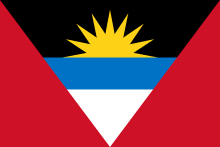





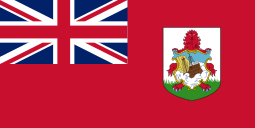




















References
- "10 U.S. Code § 2031 - Junior Reserve Officers' Training Corps". LII / Legal Information Institute.
- 10 U.S.C. § 2031
- "542.4". Archived from the original on 2011-06-13. Retrieved 2007-11-30.
- "Section 524.5". Archived from the original on 2007-09-30. Retrieved 2007-04-12.
- United States Army. "US Army Posture Statement FY01 Chapter 5: Meeting the Recruiting Challenge". Archived from the original on 2006-12-27. Retrieved 2006-12-29.
- United States Army Cadet Command (1999-03-30). "Cadet Command Policy memorandum 50" (PDF). Retrieved 2006-12-29.
- H.R. 4205 - Hearings on National Defense Authorization Act for Fiscal Year 2001 before the Committee on Armed Services, House of Representatives, February 10, 2000
- Stodghill, Ron (March 4, 2002). "Class Warfare". Time Magazine. Retrieved 2006-12-30.
- Granger, Kay (July 19, 2000). "Text - H.R.4208 - 106th Congress (1999-2000): Recruiting, Retention, and Reservist Promotion Act of 2000". www.congress.gov.
- Huet-Vaughn, Emiliano (September–December 2001). "School: A place to teach or to recruit?" (PDF). The Human Quest. pp. 10–11. Archived from the original (PDF) on 2007-09-28. Retrieved 2006-12-29.
- "Child Soldiers Global Report 2001 - United States of America". Coalition to Stop the Use of Child Soldiers. 2001. Retrieved 2010-08-25.
- United States Army. "Army Junior ROTC History". Archived from the original on 2013-02-08. Retrieved 2006-12-29.
- Air Force Officer Accession and Training Schools. "AFJROTC History". Retrieved 2006-12-29.
- United States Navy Naval Service Training Command. "NJROTC Basic Facts". Archived from the original on 2007-06-29. Retrieved 2006-12-29.
- United States Marine Corps. "History of Marine Corps JROTC Program". Retrieved 2006-12-29.
- MAST Academy Maritime Sciences Technology High School in Miami, at the 4th largest high school in Dade County and the only USCG JROTC unit in the United States Florida
- Amendments Archived 2013-07-07 at the Wayback Machine to 10 U. S.C. § 102
- "§ 102".
- ExpectMore.gov (U.S. Office of Management and Budget and Federal agencies): Junior Reserve Officer Training Corps Assessment Archived 2008-03-07 at the Wayback Machine, updated 08/13/2007.
- "Chain of Command & Battalion Staff". Furr High School NJROTC. Archived from the original on 2011-06-07. Retrieved 2009-06-11.
- "Chain of Command". Port Charlotte High School NJROTC. Retrieved 2009-06-11.
- Office of the Under Secretary of Defense (Comptroller) (February 2008). "Department of Defense Budget Fiscal Year 2009" (PDF). Retrieved 2011-05-03.
- Office of the Secretary of Defense (February 2006). "Operation and Maintenance Overview Fiscal Year (FY) 2007 Budget Estimates" (PDF). Retrieved 2006-12-29.
- "JROTC Officers". Archived from the original on 2007-04-19. Retrieved 2007-04-24.
- California Commission on Teacher Credentialing (January 2004). "Designated Subjects Special Subjects Teaching Credentials (Leaflet CL-699)". Archived from the original on 2006-12-07. Retrieved 2006-12-29.
- "mcjrotc.org". mcjrotc.org. Retrieved 2012-08-14.
- "RETIRED "GRAY-AREA" GUARD AND RESERVE MEMBERS". Retrieved 2007-04-24.
- NJROTC Training, 2007, archived from the original on June 29, 2007, retrieved February 4, 2016
- United States Navy Naval Service Training Command (August 2001). "School Administrator Guidelines for Hiring NJROTC Instructors". Archived from the original on 2009-05-10. Retrieved 2006-12-29.
- "National Defense Cadet Corps". Archived from the original on 2006-07-22. Retrieved 2006-12-14.
- "Electronic Code of Federal Regulations (e-CFR)". Archived from the original on 2007-09-30. Retrieved 2007-04-24.
- Claire Schaeffer-Duffy (2003-03-28). "Feeding the military machine: JROTC expansion and inner-city academies mark recruiting incursion into U.S. public school classrooms, critics say". National Catholic Reporter. Archived from the original on 2007-02-28. Retrieved 2007-04-24.
- Jennifer Wedekind (2005-06-05). "The Childrens Crusade". Retrieved 2007-04-24.
- Title 32: National Defense PART 542—SCHOOLS AND COLLEGES Archived 2010-05-31 at the Wayback Machine. National Archives and Records Administration.
- Allen McDuffee (2008-08-20). "No JROTC Left Behind". In These Times.
- For more about the regulations relating all personnel (including cadets) to military command authority, see: Army, U. S. (2006). Army Command Policy (unclassified) – Five Components of Fitness [Step by step]. Headquarters: Department of the Army. AR 600-20.
- For historical context for many military customs, from ceremonies to activities forbidden by force of observed custom, as such customs are adopted by individual JROTC units under mentorship of instructors on their retirement from active duty:Bonn, LTC Keith E. (2002). Army Officer's Guide (49th ed.). Stackpole Books. ISBN 0-8117-2649-5.
- "JROTC Creed History". Archived from the original on 2012-12-17. Retrieved 2007-10-17.
- Civilian Marksmanship Program: CMP Develops New JROTC Marksmanship Instructor Course
- "Band | Randolph-Macon Academy". www.rma.edu.
- "JROTC – JROTC – Central Catholic High School". www.cchs-satx.org.
- Army, U. S. Military History and Professional Development. U. S. Army Command and General Staff College, Fort Leavenworth, Kansas: Combat Studies Institute. 85-CSI-21 85. Directions for inclusion of veterans, cadets, and other persons in unit activities such as unit organization day celebrations
- "JROTC History". www.usarmyjrotc.com. Retrieved 2018-06-24.
- Naval Education and Training Command (June 2010). "Precedence of Order of Seniority". Cadet Field Manual: NAVEDTRA 37116-H (PDF). A Field Manual for the Navy Junior Reserve Officer Training Corps: 0509-LP-110-2131 (8 ed.). United States Department of the Navy. Archived from the original (PDF) on July 15, 2011. Retrieved July 15, 2011.
- Naval Education and Training Command (June 2010). "Awards and Decorations". Cadet Field Manual: NAVEDTRA 37116-Hl (PDF). A Field Manual for the Navy Junior Reserve Officer Training Corps: 0509-LP-110-2131 (8 ed.). United States Department of the Navy. Archived from the original (PDF) on July 15, 2011. Retrieved July 15, 2011.
- Section 524.5 Archived 2007-09-30 at the Wayback Machine of the CFR National Defense title states in part that "JROTC/NDCC cadets may qualify for an advantageous position in the Senior ROTC and for a higher pay grade upon enlistment in a Regular or Reserve component of the Armed Forces."
- Army, U. S. (2011). Active and Reserve Components Enlistment Program (PDF). Washington, D.C.: Department of the Army. AR 601-210. Archived from the original (PDF) on 2012-06-17. See paragraph 2-18, "Enlistment pay grades for personnel without prior Service". Students who complete 1 or more years of JROTC may enlist at pay grades E-2 (PV2) or E-3 (PFC).
- "Electronic Code of Federal Regulations:". Ecfr.gpoaccess.gov. Archived from the original on 2012-03-19. Retrieved 2012-08-14.
- "Academic Competitions". www.usarmyjrotc.com.
- "2019-2020 JROTC Leadership & Academic Bowl". Marine Corps JROTC.
- "JLAB expands minds, leadership skills of JROTC Cadets". www.army.mil.
- Caruso, Project. "Quiz Bowl". www.cofcontests.com.
- https://www.usarmyjrotc.com/events/national_hs_drill.php
- "NHSDTC Homepage". thenationals.net.
- Cadet Reference (Ft. Knox, KY: U.S. Army Cadet Command), 4, https://www.usarmyjrotc.com/doc/public/cadetPages/Cadet_Reference_V6.pdf.
- "NJROTC Achievements and Ribbons". www.dhsnjrotc.net.
- "MIL-DTL-11589".
- Air Force Junior ROTC Ribbon Chart Version: 1 August 2018, https://4.files.edl.io/11e0/08/19/18/213331-9dae3d9d-ee7c-46e6-9066-a00474d20583.pdf
- Parker, J. Michael (November 21, 2008). "Central Catholic Trio Who Died on Tarawa Remembered". Today's Catholic. Retrieved October 20, 2013.
[...] Bordelon, the ROTC battalion major during his senior year in 1937-38, was posthumously awarded the Medal of Honor six years later for his extraordinary heroism and determination in leading men despite several serious wounds. [...]
- "First Lieutenant Baldomero Lopez, USMC (Deceased)". Who's Who in Marine Corps History. United States Marine Corps History Division. Archived from the original on 2011-06-15. Retrieved September 23, 2009.
- Steele, Kathy (September 9, 2009). "Memorial, display to honor war hero". South Tampa News & Tribune. Tampa, Florida. Archived from the original on July 14, 2012. Retrieved September 23, 2009.
- Partlow, Joshua; Parker, Lonnae O'Neal (September 27, 2006). "West Point Mourns a Font Of Energy, Laid to Rest by War". The Washington Post. The Washington Post Company. Retrieved October 20, 2013.
[...] From early on, she wanted to be a soldier, her friends recalled, and she became wing commander of Junior ROTC at Oxon Hill. [...]
- "Veterans For Peace National Resolutions (Updated January 2013)" (PDF). Veterans For Peace.
That VFP opposes Junior Reserve Officer Training (JROTC) in the public schools of the U.S. and calls for their discontinuance." and "Veterans For Peace National encourages its members to work with like minded organizations and people to develop resources and classes in public schools that offer alternative views of citizenship to that of JROTC.
- Asif ullah: Countering Junior Recruitment Archived 2008-01-14 at the Wayback Machine
- The American Friends Service Committee (1999). "Trading Books for Soldiers: The True Cost of JROTC Report Summary". Archived from the original on 2004-06-26. Retrieved 2006-12-29.
- Catherine Lutz (Professor of Anthropology at The University of North Carolina at Chapel Hill) and Lesley Bartlett. Making Soldiers in the Public Schools: An Analysis of the Army JROTC Curriculum. American Friends Service Committee, April 1995 Archived 2007-01-19 at the Wayback Machine. Reprinted in Education Digest, November 1995: 9-14.
- "Review of JROTC Curriculum : Militarism in Schools : Youth & Militarism : AFSC". Archived from the original on January 19, 2007.
- See e.g. Army JROTC Student Core Text - Citizenship and American History page 43. Archived February 2, 2007, at the Wayback Machine
- Pogash, Carol (April 2005). "Mr. Miller Goes to War". edutopia.org, Edutopia Magazine. Archived from the original on 2006-06-30. Retrieved 2006-12-29.
- The Coalition Against Militarism In Our Schools. "Mission statement of the coalition against militarism in the schools". Archived from the original on 2007-06-10. Retrieved 2007-03-21.
- The Coalition Against Militarism In Our Schools. "Military Infiltration of Our Public Schools". Archived from the original on 2007-06-09. Retrieved 2006-12-29.
- "Breaking News". Archived from the original on April 19, 2007.
- Nazario, Sonia (2007-02-25). "Activists in Calif. school district crusading against junior ROTC". Los Angeles Times archived via boston.com National News.
- "NYCLU Pushes Buffalo High School To Release Students From Mandatory JROTC Program". News & Press Releases. New York Civil Liberties Union. October 12, 2005. Retrieved August 28, 2013.
- "Soldiers of Misfortune" (PDF). American Civil Liberties Union. 2008.
- "11.b Optional Protocol to the Convention on the Rights of the Child on the Involvement of Children in Armed Conflict". United Nations Treaty Collection. May 25, 2000. Retrieved August 28, 2013.
- "Marine Corps Order 1533.6E" (PDF). www.marines.mil. Commandant of the United States Marine Corps. Retrieved 2014-08-14.
Videos
- Atlanta Public Schools' JROTC Pass-in-Review
- Union HS Army JROTC Unarmed Regulation at Central Regional Drill Competition 2019
- North Salem HS JROTC Vanir Guard Color Guard @ The Nationals, 5 May 2017
- Joint Service Academic Bowl Championship
- Ozark High School JROTC Drill Team 2017
- Virginia 91st Air Force JROTC Band at Fall Family Day Parade 2015
- JROTC Spring Competition - Lincoln Drum Corps 2015
External links
| Wikimedia Commons has media related to Junior Reserve Officers' Training Corps. |